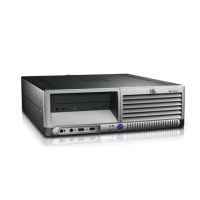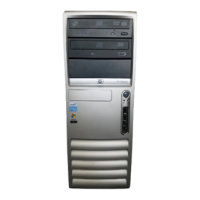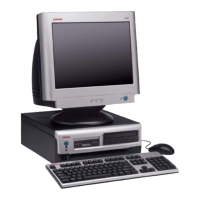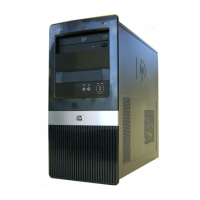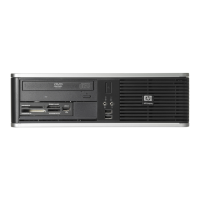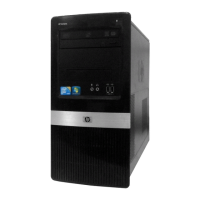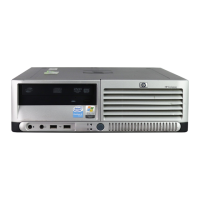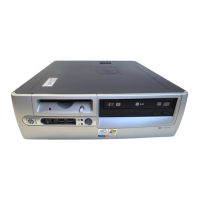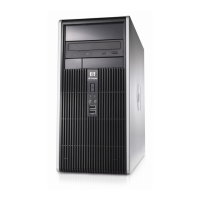Chapter 5 Input/Output Interfaces
5.2.2 SATA INTERFACES
These systems provide at least one serial ATA (SATA) interface that can provide certain
advantages over the legacy EIDE interface including:
♦
♦
Higher transfer rates: up to 1.5 Gb/s (150 MB/s)
Reduced wiring (smaller cable assemblies)
The SATA interface duplicates most of the functionality of the EIDE interface through a register
interface that is equivalent to that of the legacy IDE host adapter.
5.2.2.1 SATA PROGRAMMING
The SATA interface is configured as a PCI device during POST and controlled through I/O-
mapped registers at runtime. Non-DOS (non-Windows) operating systems may require using
Setup (F10) for drive configuration.
SATA Configuration Registers
The SATA controller is configured as a PCI device with bus mastering capability. The PCI
configuration registers for the SATA controller function (PCI device #31, function #2) are listed
in Table 5-1.
Table 5-4. IDE PCI Configuration Registers
Table 5-4.
SATA PCI Configuration Registers (82801, Device 31/Function 2)
PCI Conf.
Addr.
Register
Reset
Value
PCI Conf.
Addr.
Register
Reset
Value
00-01h Vender ID 8086h 0F..1Fh Reserved 0’s
02-03h Device ID 24D1h 10-17h Pri. Cmd, Cntrl. Addrs. 1 (both)
04-05h PCI Command 0000h 18-1Fh Sec. Cmd, Cntrl. Addrs. 1 (both)
06-07h PCI Status 02B0h 20-23h BMstr Base Address 1
08h Revision ID 00h 2C, 2Dh Subsystem Vender ID 0000h
09h Programming 8Ah 2E, 2Fh Subsystem ID 0000h
0Ah Sub-Class 01h 34h Capabilities pointer 80h
0Bh Base Class Code 01h 3Ch Interrupt Line 00h
0Dh Master Latency Timer 00h 3Dh Interrupt Pin 01h
0Eh Header Type 00h 40-57h Timing, Control All 0’s
5-4 hp compaq d330 and d530 Series of Personal Computers
Featuring the Intel Pentium 4 Processor
First Edition – June 2003

